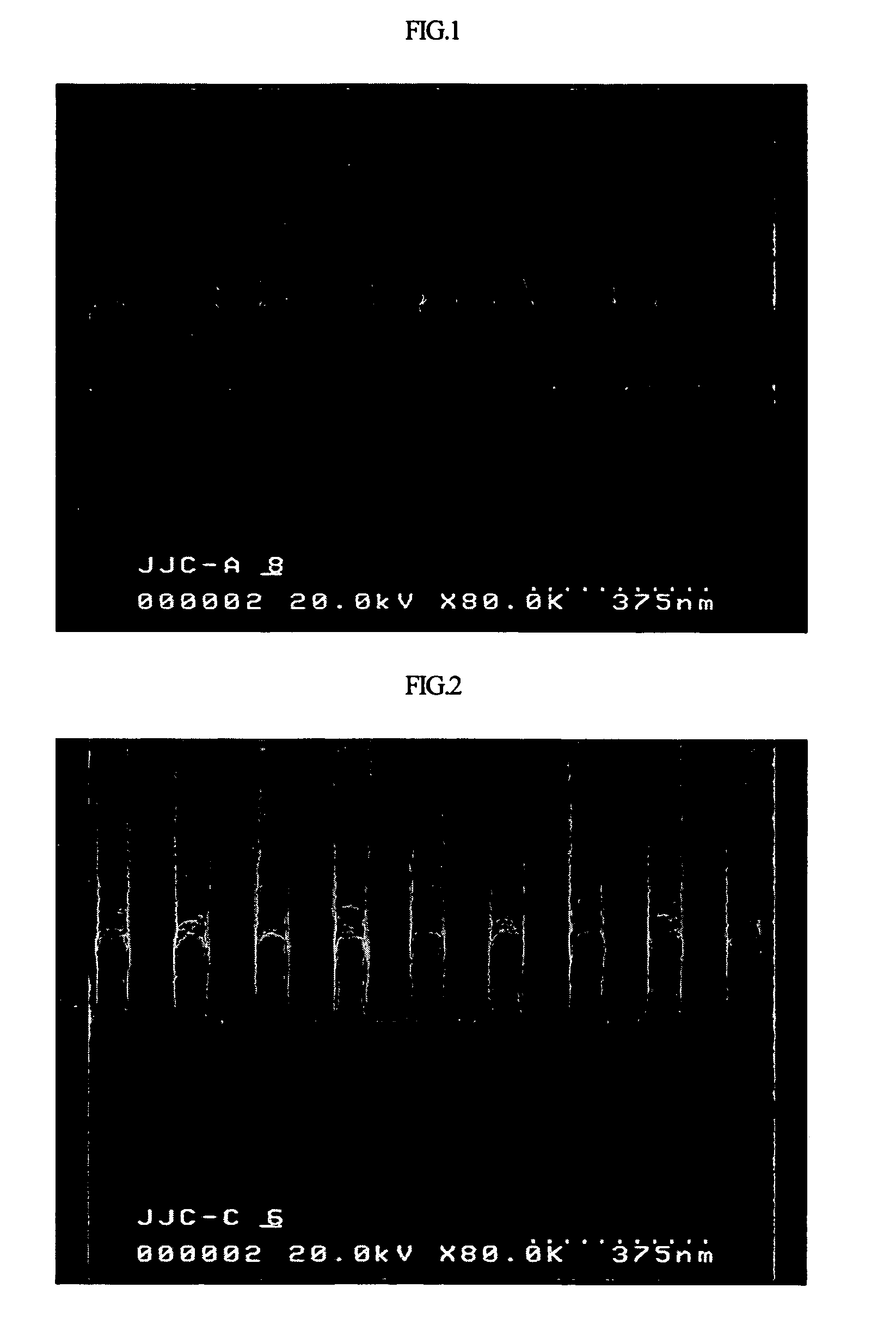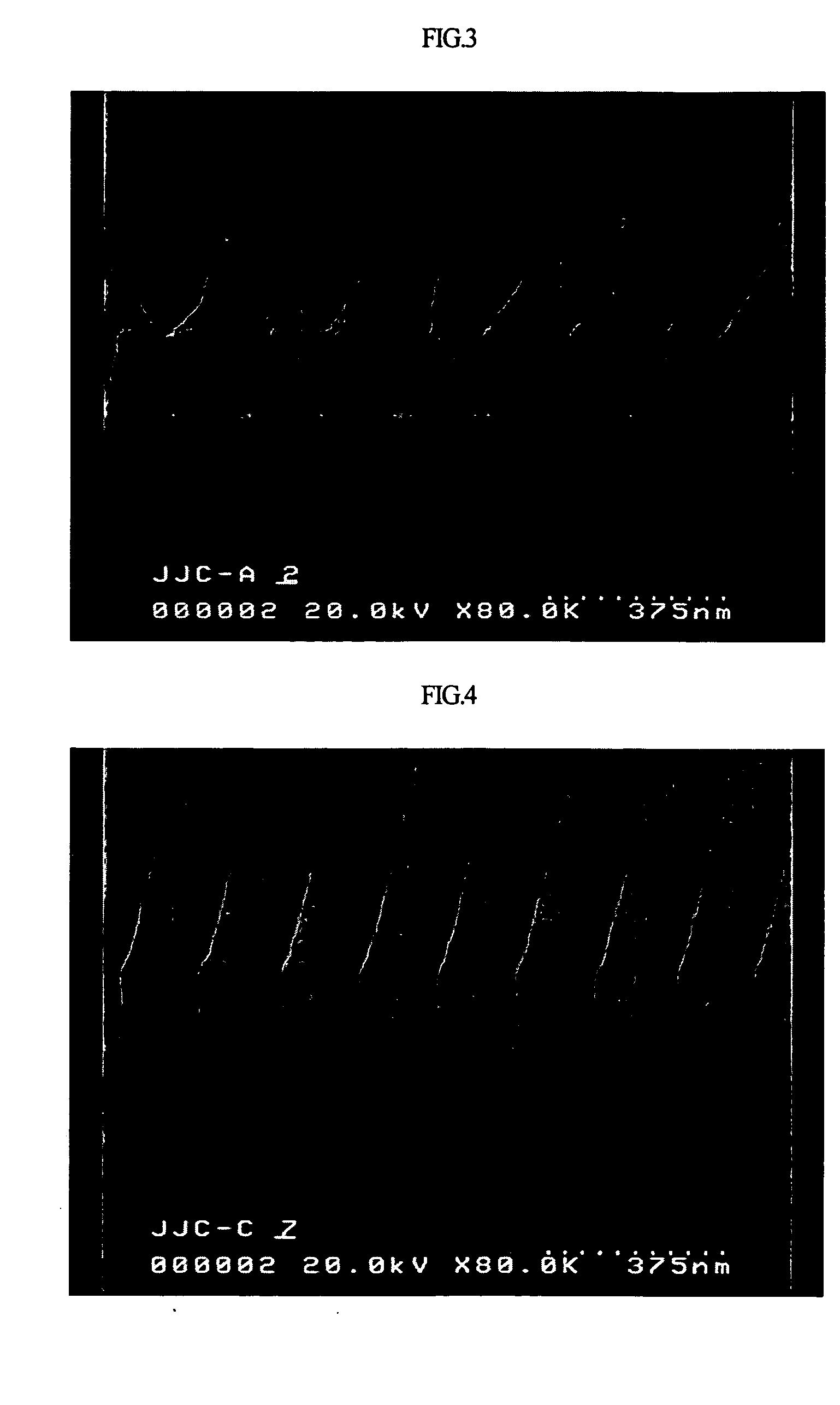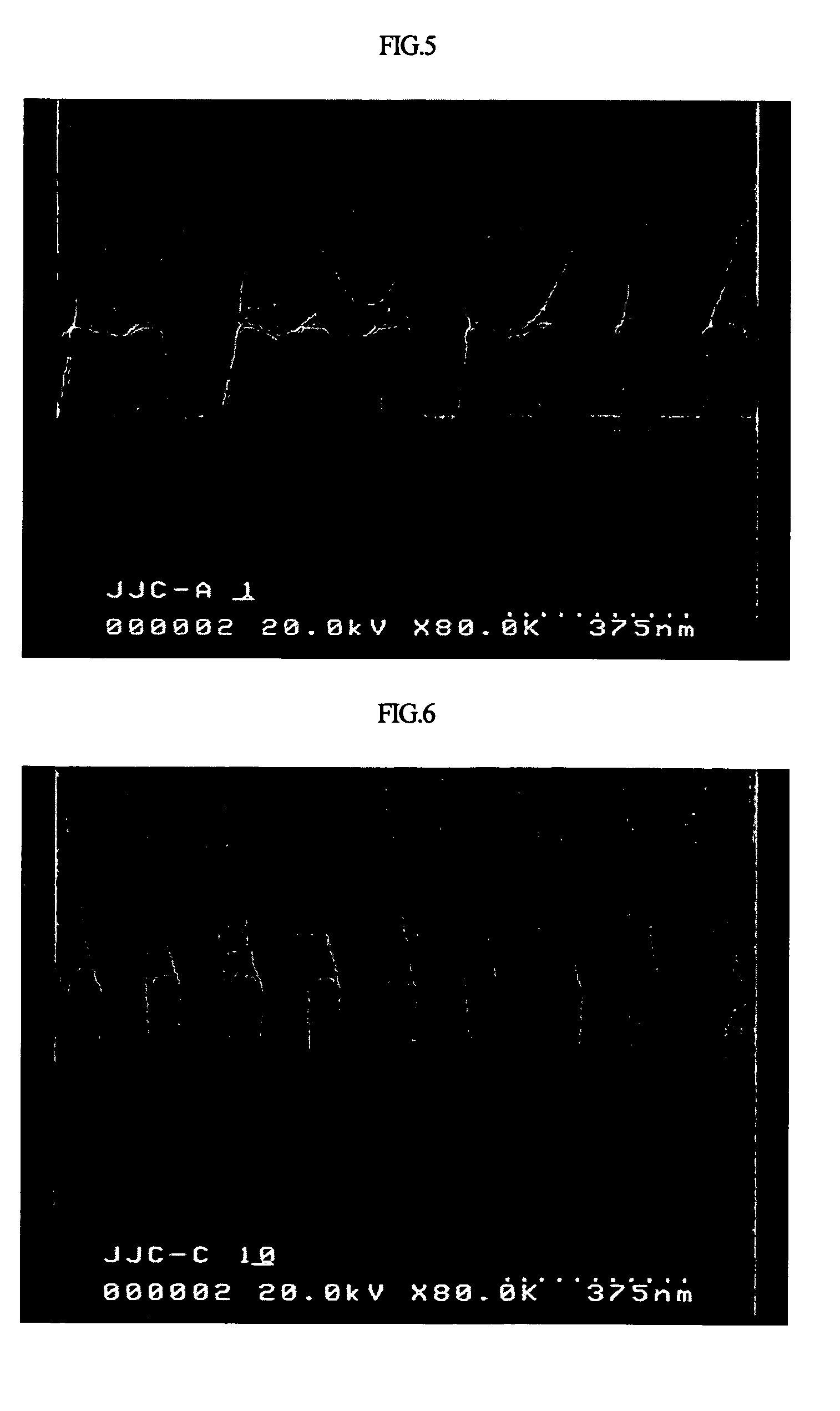Top anti-reflective coating composition and method for pattern formation of semiconductor device using the same
- Summary
- Abstract
- Description
- Claims
- Application Information
AI Technical Summary
Benefits of technology
Problems solved by technology
Method used
Image
Examples
example 1
Preparation of a Top Anti-Reflective Coating Composition and Pattern Formation
[0050] 2.5 g of poly(t-butylacrylate-acrylic acid-3-hydroxypropylmethacrylate) and 0.15 g of triphenylsulfonium perfluorooctanesulfonate (Formula 5) were dissolved in 100 g of n-butanol to create a top anti-reflective coating composition for immersion lithography.
[0051] A photosensitizer (AR1221J, JSR) was coated to a thickness of 220 nm on a wafer, and baked at 130° C. for 90 seconds. The top anti-reflective coating composition was coated at 3,000 rpm on the photosensitizer, and baked at 90° C. for 60 seconds. After exposing the wafer to light using ArF exposure equipment, the exposed wafer was baked at 130° C. for 90 seconds and developed to form a pattern. An image of the pattern is shown in FIG. 2. This image indicates that the pattern was vertically formed when compared to the pattern formed in Comparative Example 1 (see FIG. 1).
example 2
Preparation of a Top Anti-Reflective Coating Composition and Pattern Formation
[0054] A top anti-reflective coating composition was prepared in the same manner as in Example 1, except that poly(t-butylacrylate-acrylic acid-N-isopropylacrylamide) was used as a top anti-reflective coating polymer. Further, a pattern was formed using the top anti-reflective coating composition in the same manner as in Example 1.
[0055] An image of the pattern thus formed is shown in FIG. 4. This image indicates that the pattern was vertically formed when compared to the pattern formed in Comparative Example 2 (see FIG. 3).
example 3
Preparation of a Top Anti-Reflective Coating Composition and Pattern Formation
[0058] A top anti-reflective coating composition was prepared in the same manner as in Example 1, except that poly(t-butylacrylate-acrylic acid-2-hydroxyethylmethacrylate) was used as a top anti-reflective coating polymer. Further, a pattern was formed using the top anti-reflective coating composition in the same manner as in Example 1.
[0059] An image of the pattern thus formed is shown in FIG. 6. This image indicates that the pattern was vertically formed when compared to the pattern formed in Comparative Example 3 (see FIG. 5).
[0060] As apparent from the above description, the top anti-reflective coatings formed using the anti-reflective coating compositions of the disclosure allow for better-quality results from immersion lithography over those compositions and coating previously disclosed. Since the top anti-reflective coating has a light transmission of 96% or higher, it is transparent to a light s...
PUM
| Property | Measurement | Unit |
|---|---|---|
| Temperature | aaaaa | aaaaa |
| Temperature | aaaaa | aaaaa |
| Fraction | aaaaa | aaaaa |
Abstract
Description
Claims
Application Information
 Login to View More
Login to View More - R&D
- Intellectual Property
- Life Sciences
- Materials
- Tech Scout
- Unparalleled Data Quality
- Higher Quality Content
- 60% Fewer Hallucinations
Browse by: Latest US Patents, China's latest patents, Technical Efficacy Thesaurus, Application Domain, Technology Topic, Popular Technical Reports.
© 2025 PatSnap. All rights reserved.Legal|Privacy policy|Modern Slavery Act Transparency Statement|Sitemap|About US| Contact US: help@patsnap.com



